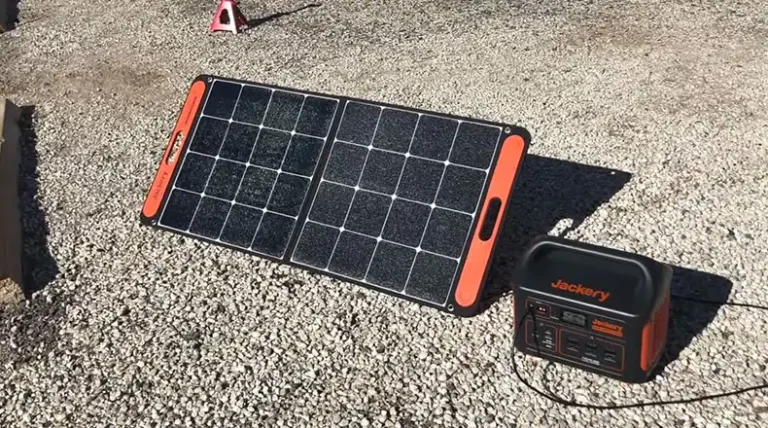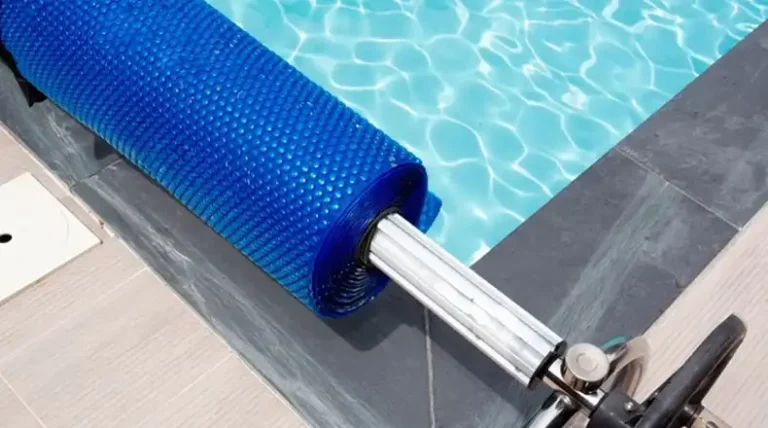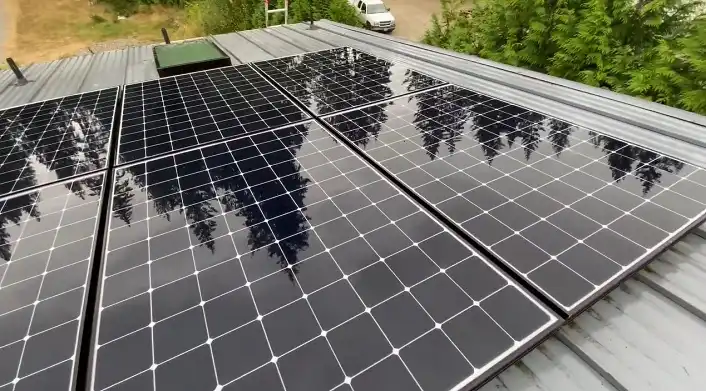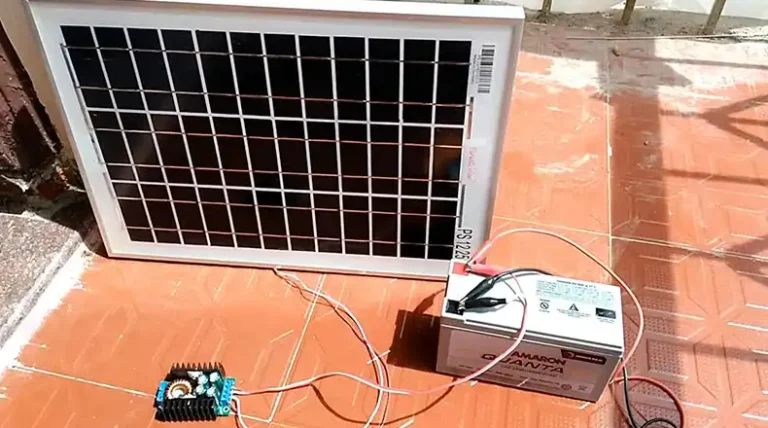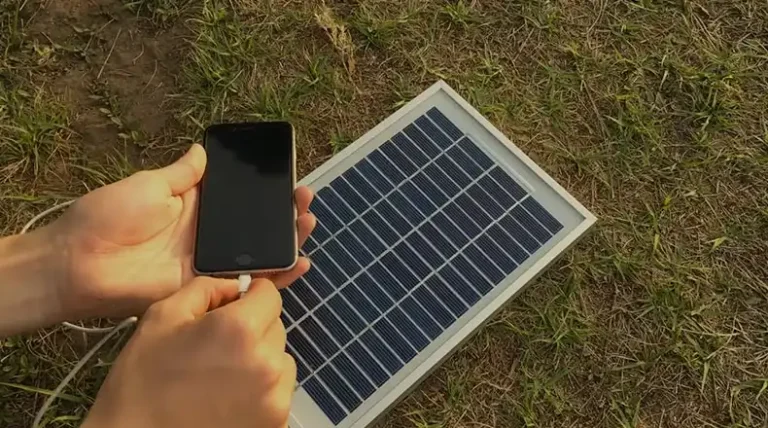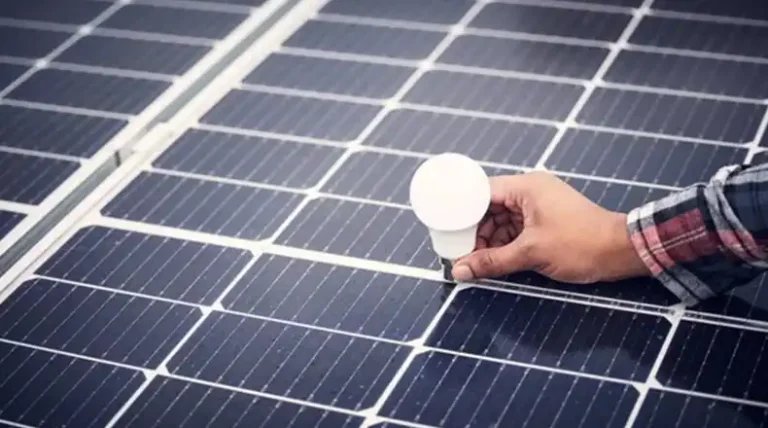Solar Panel to Power Refrigerator | Full Guide to Power Your Fridge
Utilizing solar photovoltaic panels provides an eco-friendly approach to operating refrigerators and appliances by harnessing the abundant renewable energy of the sun. As solar technology continues advancing and costs keep declining, solar-powered refrigeration offers homeowners and businesses financial payback through years of free power while reducing environmental impact. This post explores the details around sizing and installing DIY solar systems to cleanly cool your food or commercial space. So, if you’re interested, you’re welcome. Take a few minutes and keep reading till the end.
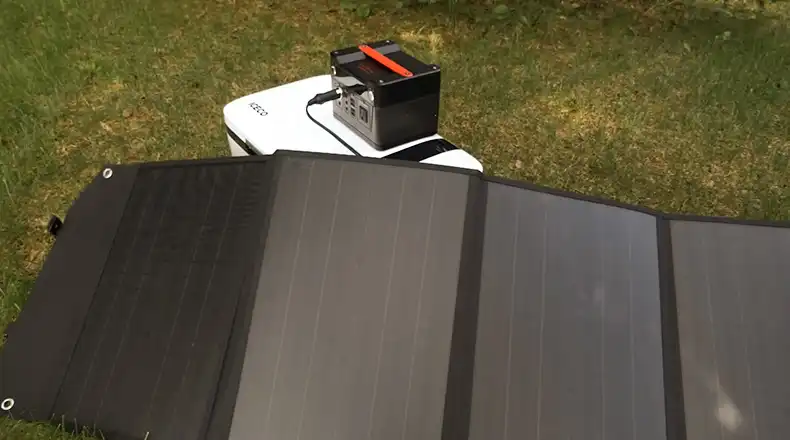
How Do You Find How Much Energy Your Refrigerator Uses?
Knowing how much energy your refrigerator consumes is key to determining what size solar panel system you need. Here are the calculations based on various fridge sizes:
Full-Size Refrigerator
According to the annual kWh usage of 650 kWh,
Daily kWh usage: 650 / 365 = 1.78 kWh
Startup (inrush) watts: 1600W
Running watts: 180W
Average Refrigerator
According to the annual kWh usage of 500 kWh,
Daily kWh usage: 500 / 365 = 1.37 kWh
Startup (inrush) watts: 1200W
Running watts: 120W
Small Refrigerator
According to the annual kWh usage of 350 kWh,
Daily kWh usage: 350 / 365 = 0.96 kWh
Startup (inrush) watts: 800W
Running watts: 85W
Basically,
| Refrigerator Type | Annual kWh Usage | Daily kWh Usage | Startup Watts | Running Watts |
| Full-Size | 650 kWh | 1.78 kWh | 1600W | 180W |
| Average | 500 kWh | 1.37 kWh | 1200W | 120W |
| Small | 350 kWh | 0.96 kWh | 800W | 85W |
Understanding your refrigerator’s rated startup watts and running watts is also important for proper solar system sizing. The startup wattage is the initial energy surge needed to turn on the compressor. The running watts refer to its continuous energy usage during operation.
How Do You Find How Many Watts Your Solar Panels Generate?
Solar panels have a rated wattage indicating how much power they can produce under ideal conditions. The power output rating of solar panels depends on their area and sunlight to electricity conversion efficiency. The peak wattage rating is calculated using:
Power (Watts) = Solar Panel Area (m2) x Solar Irradiation (Watts/m2) x Efficiency (%)
Common residential panels fall in the 250W to 400W (250W, 300W, 330W, 360W, 400W) solar panel size range. Understanding this peak-rated power determines how suitable they are for your refrigerator.
It’s crucial to determine your solar panels’ production capacity to ensure your system meets your refrigerator’s power needs. Understanding this rated maximum power is key.
How Many Solar Panels Do You Need to Run a Refrigerator?
Here are the solar panel requirements for powering the refrigerators based on their energy usage:
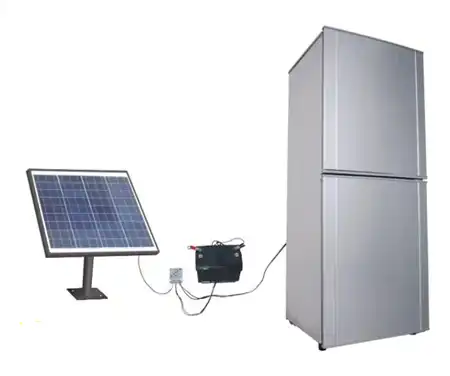
Full-Size Refrigerator
Here, daily energy usage is 1.78 kWh. So –
With 250W panels, need 8 panels (1.78 kWh / 250W = 7.12, round up to 8)
With 300W panels, need 7 panels
With 400W panels, need 5 panels
Average Refrigerator
Here, daily energy usage is 1.37 kWh. So –
With 250W panels, need 6 panels
With 300W panels, need 5 panels
With 400W panels, need 4 panels
Small Refrigerator
Here, daily energy usage is 0.96 kWh. So –
With 250W panels, need 4 panels
With 300W panels, need 4 panels
With 400W panels, need 3 panels
That means,
| Refrigerator Type | Number of 250W Panels | Number of 300W Panels | Number of 400W Panels | Peak Sun Hours | Required Solar Power |
| Full-Size | 8 | 7 | 5 | 6.5 | 315W |
| Average | 6 | 5 | 4 | 6.5 | 242W |
| Small | 4 | 4 | 3 | 5 | 221W |
NOTE: Required Solar Power = (Estimated daily energy usage / Peak Sun Hours) x 1.15 (for system losses)
The number of solar panels needed depends on the refrigerator’s energy usage and solar panel wattage rating. Match your refrigerator power needs to solar panel production capacity for ideal system sizing.
What Affects the Number of Required Solar Panels to Run a Refrigerator?
Several key factors impact the solar panel system size required, including –
Location: The solar irradiation level based on geographic location affects panel energy production. More sunlight equals more power.
Energy Usage: A highly efficient refrigerator with lower energy usage can operate on fewer solar panels. An older inefficient model requires more panels.
Solar Panel Types: Higher-rated power solar panels produce more watts per panel, meaning fewer are needed. Lower output panels require installing more.
Orientation/Tilt: Optimizing solar panel orientation and tilt to your location increases efficiency, reducing the number needed.
Properly accounting for these factors allows accurate system sizing to run a refrigerator.
How to Wire Solar Panels to Power a Refrigerator?
Here are the key steps to connect the solar system components –
Step 1: Mount solar panels on the south-facing roof space at an optimum tilt angle.
Step 2: Run wiring from panels through the combiner box down to the DC disconnect switch.
Step 3: Connect to the charge controller which regulates panel output to batteries.
Step 4: Link batteries to power inverter which converts DC to AC power for refrigerator.
Step 5: Include appropriately sized overcurrent fuses for safety at all connections.
Step 6: Install separate AC and DC disconnect switches to safely de-energize the system.
Fuses prevent overcurrent damage in the solar wiring. On/off switches enable safe isolation during maintenance. Properly connecting all components ensures efficient power transfer to the refrigerator.
How to Size Other System Components?
Battery Bank: Size your battery bank to store sufficient energy to power the refrigerator when solar panels are not producing, such as overnight. For example, refrigerators
Full-size – 400 Ah battery bank
Average – 300 Ah battery bank
Small – 200 Ah battery bank
Charge Controller: Size your charge controller to handle 1.25 to 1.3 times your total solar panel array wattage. For example, for a 300W panel system, use a 390W to 390W charge controller.
Inverter: Choose a power inverter with continuous wattage rating 20-30% above refrigerator running wattage, and peak output at least 2x higher. For example, for a 180W refrigerator, use a 250-240W continuous inverter.
Properly sizing these components ensures sufficient solar power collection and storage.
How to Operate and Maintain the System?
To keep your solar power system humming along smoothly, make sure to perform some routine checks and adjustments. Every 1-3 months, take a moment to tweak your equalization charging – it’s a small effort that pays off big in maintaining your system’s health. Set your battery charging voltages at 14.4V for float and 14.8V for bulk to ensure your batteries get just the right amount of charge. Don’t forget to enable the battery charger function, allowing your inverter to fill up the battery bank with excess solar power whenever it’s available.
To prevent over-discharge, set a low battery cut-off between 10.5V and 11V – think of it as a safety net for your batteries. Regular checks are crucial, so inspect wiring connections, clean solar panels every 6 months, and consider replacing batteries every 5-8 years based on their type. Keep a close eye on your charge controller and inverter displays – they’re like the dashboard of your solar system, and any anomalies should be investigated promptly.
If issues arise, check the fuses – they play a crucial role in protecting your system. Remember, routine maintenance and setting adjustments aren’t just chores; they’re the keys to an optimally functioning solar power setup. With vigilant monitoring, you can catch and address any potential problems before they escalate.
How to Expand the System?
Adding more solar panels in the future is straightforward. Simply mount additional panels wire them through a separate combiner box into a parallel connection with your existing array, and fuse accordingly. Increase your charge controller size if total watts exceed its current rating.
Running other appliances is also possible. Determine their wattage needs and daily usage to calculate how much extra solar panel capacity you need. Expand your battery bank storage capacity appropriately as well. The larger the system, the more devices it can power.
Cost Considerations and Payback Periods
Solar panel systems do require significant upfront investment. However, they provide free renewable energy once installed. For example, refrigerators
Full-size system cost: $3,000
Average system cost: $2,500
Small system cost: $2,000
With sufficient sunlight and displacing typical utility rates of around $0.15 per kWh, payback periods can range from 5-10 years. Location and electricity prices affect this timeframe. Environmental benefits also stem from using clean solar energy for years beyond the initial financial breakeven.
Summary
In summary, powering refrigerators with solar photovoltaics provides an eco-friendly, cost-effective option for renewable energy. Correctly sizing your solar system using the above guidance enables tapping into free sunlight to run these essential appliances. Investing in solar-powered refrigeration or even full off-grid solar homes pays dividends for decades through energy independence and environmental stewardship.
Relevant Questions
How long will a solar battery run in a refrigerator?
A properly sized solar battery bank, as outlined above for each refrigerator size, can typically run for 1-3 days without sunlight.
Can a 100-watt solar panel run a refrigerator?
A 100W solar panel system cannot provide sufficient energy to run even a small refrigerator except in very sunny climates. Multiple panels are required, as covered earlier based on refrigerator energy usage calculations.
Can a refrigerator run on a solar battery all night?
Yes, with an adequately sized battery bank, the system can power the refrigerator overnight by storing enough solar energy captured during the day. Automotive and deep cycle batteries are commonly used given their deep discharge capacity. Proper battery maintenance is required.

